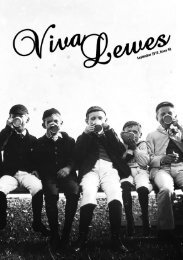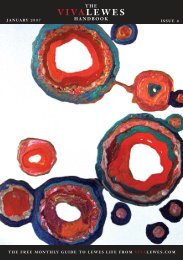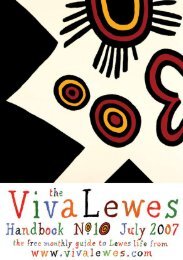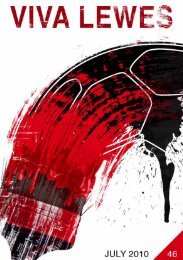You also want an ePaper? Increase the reach of your titles
YUMPU automatically turns print PDFs into web optimized ePapers that Google loves.
foCus oN:<br />
sefura holding a portrait of her husband<br />
by Jenny matthews (2009)<br />
Can you tell us the circumstances surrounding<br />
this picture? I’ve been going to Afghanistan since<br />
1988 either for aid organisations or on self-funded<br />
trips. I’m particularly interested on the effect conflict<br />
has on women. I was working for Care International<br />
in Kabul, visiting widows. Kabul is a city of widows,<br />
who find themselves in a very difficult position, because<br />
they have lost their breadwinner, and there’s a<br />
stigma against women working. The caption of this<br />
picture reads ‘The Taliban killed my husband in 2001.<br />
He was in the military. I have four daughters and two<br />
sons. Five months after I was widowed, my daughter,<br />
who had been engaged since she was three months old,<br />
disappeared. She was 16. The family of her fiancé was<br />
furious. They demanded two daughters in her place.<br />
There was nothing I could do.’<br />
Your photographs are being exhibited in the former home of Lee Miller, who was herself a war<br />
photographer. Was she a big influence? Her photographs were very strong, and she was working at a<br />
time when it was a hundred times more difficult to do this sort of job than it is now. Using a film camera<br />
meant she had to develop all her photos, of course, and as a result the shots are much more considered.<br />
But I’m actually much more amazed about the dispatches she wrote from the front. It’s incredible that<br />
in such an atmosphere, she was able to be so coherent. She must have been such an extremely feisty<br />
young woman. She could have had a very easy life but she went off and chose the hard route.<br />
It’s rare for women to cover wars… More and more women are doing so, but I think they do it a little<br />
bit differently, going for the quieter detail behind the scenes. I think the Guardian’s Maggie O’Kane<br />
was a big influence on me, in the way she examined the lives of women during wartime. Behind the<br />
‘bang bang’ there’s a hell of a lot going on, that doesn’t otherwise get understood.<br />
Which conflict zones have you been to? Nicaragua, Rwanda, The Congo, Afghanistan, the Libyan<br />
border, Iraq, Iran, Sri Lanka, Uganda, Ethiopia, Eritrea, Gaza, Palestine… do you want me to go on?<br />
Rwanda was particularly harrowing. I went there just before the genocide and afterwards I went back to<br />
find the people I had photographed, and found they were all dead. I returned to the country many times<br />
after that collecting the testimonies and photographing survivors.<br />
To keep going back to places like that shows remarkable courage. Is it… addictive? I suppose you<br />
could say it’s addictive, if that’s the right word. It’s interesting to look at what happened to Lee Miller.<br />
After all that conflict she witnessed in WW2, she went to rural Sussex, and had to try to reinvent herself.<br />
The only alternative to this is propelling yourself towards the next big thing.<br />
What picture would you hang on your desert island palm tree? Picasso’s Guernica. It’s a bit obvious<br />
but what could be more amazing, and a stark reminder of life beyond the idyll?<br />
Jenny Matthews Women and War, Farley Farm House Barn Gallery, Chiddingly, Aug 7th-Sept 4th, open<br />
days 7th, 21st Aug and Sept 4th. For info on tours ring 01825 872856.<br />
W W W. V i Va L E W E s . C o M<br />
p H o t o g r a p H y<br />
4 9












